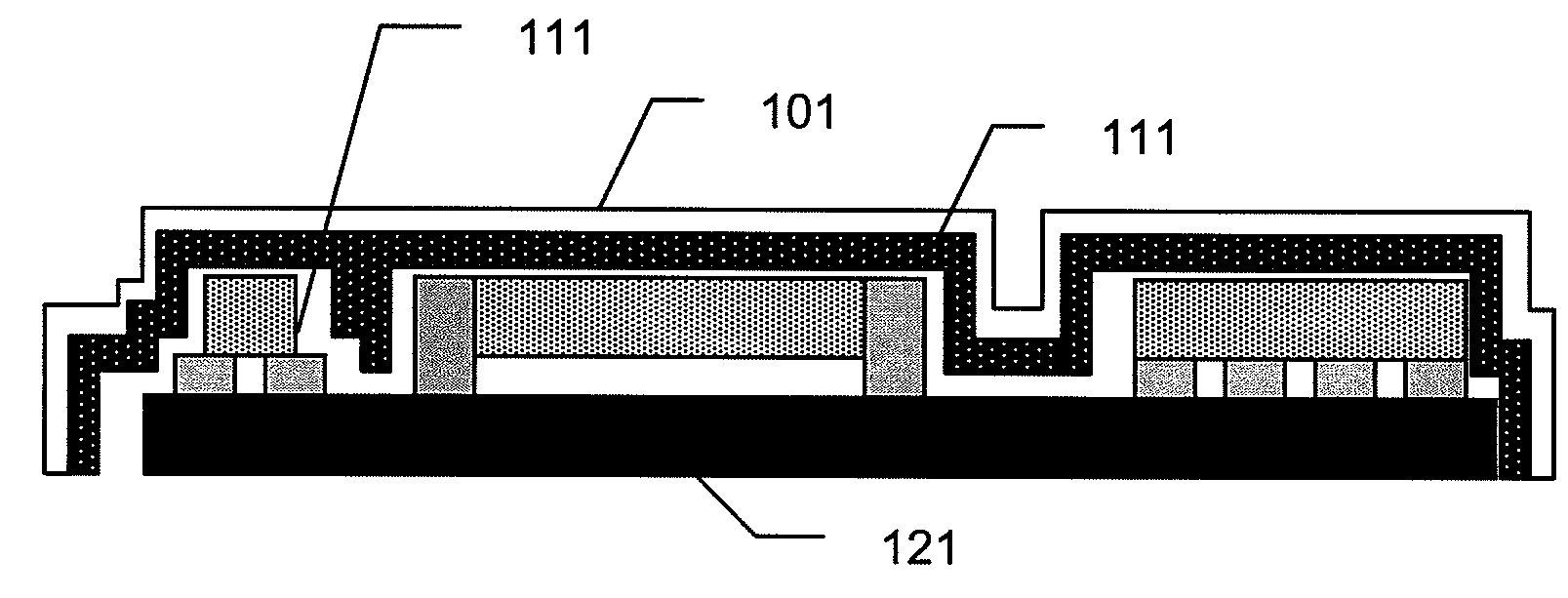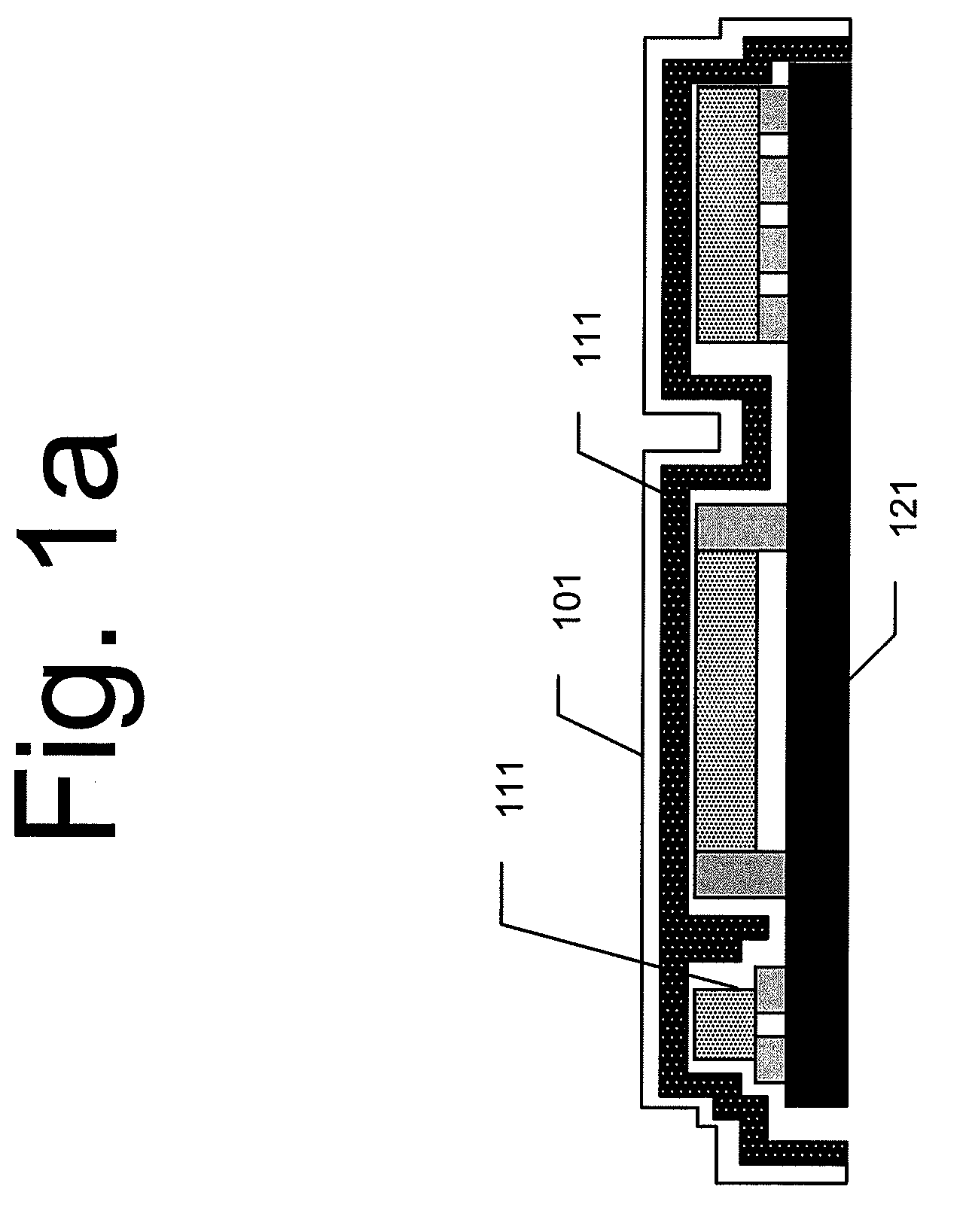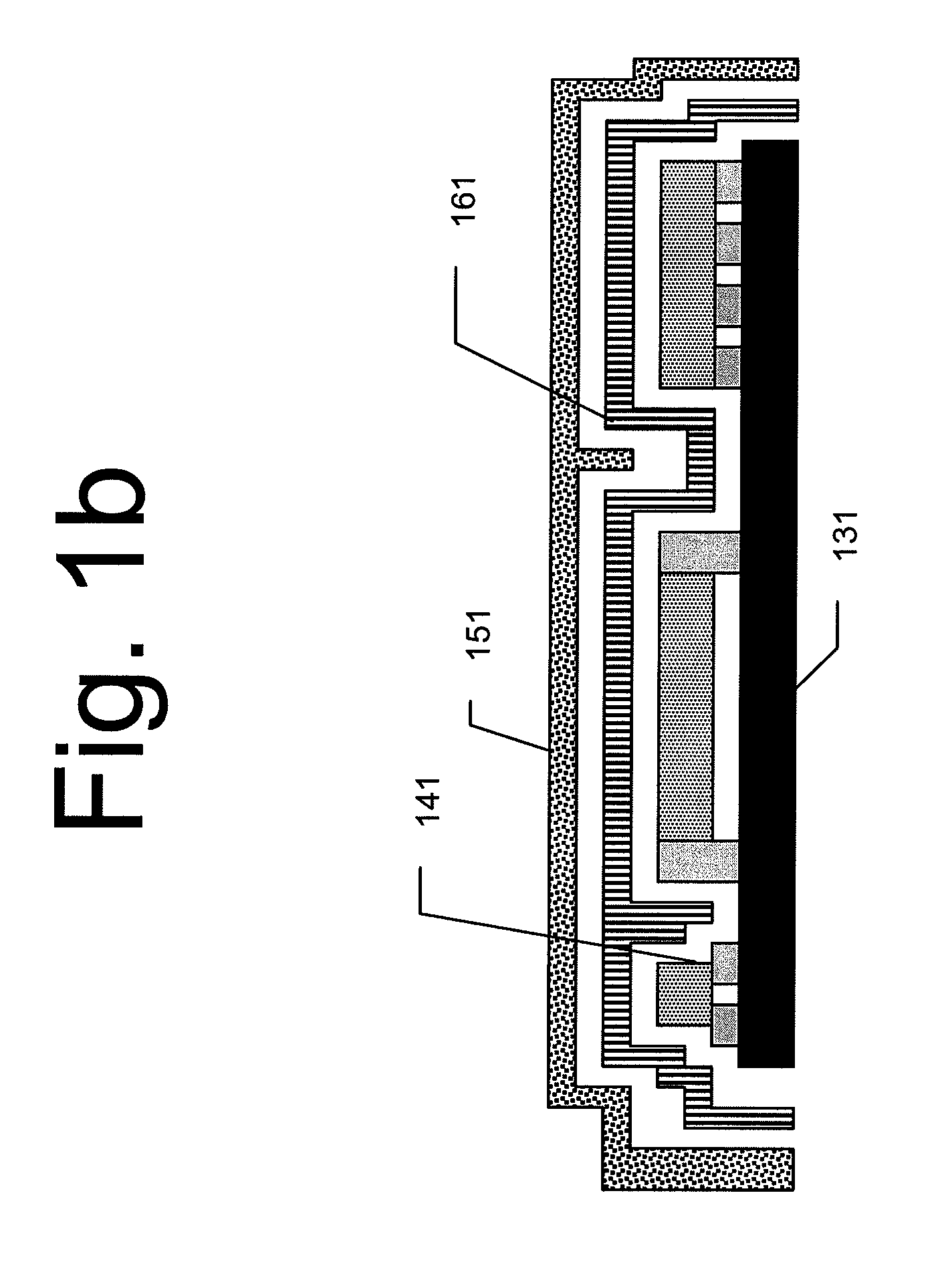Serviceable conformal em shield
a conformal shield and shielding technology, applied in the field of electromagnetic and radiofrequency shielding solutions, can solve the problems of affecting affecting the safety of the system, so as to reduce the overall size of the component, and reduce the effect of em leakag
- Summary
- Abstract
- Description
- Claims
- Application Information
AI Technical Summary
Benefits of technology
Problems solved by technology
Method used
Image
Examples
Embodiment Construction
[0038]The following detailed description of the invention refers to the accompanying drawings. The same reference numbers in different drawings identify the same or similar elements. Also, the following detailed description does not limit the invention. Instead, the scope of the invention is defined by the appended claims and equivalents thereof.
[0039]In one variation, a conformal electro-magnetic shield for an electronic or electro-optical component or component group may include at least an electrically insulating layer disposed onto the component surface and an electrically conductive shielding layer disposed on top of the insulating layer.
[0040]Some such variations may include an elastomeric insulating layer such as silicone, elastomer, resin, latex, rubber, and similar flexible substances. Such variations of an insulating layer may be configured, based on the material properties of the layer and the underlying component(s), to be easily removable such that the underlying compon...
PUM
| Property | Measurement | Unit |
|---|---|---|
| electrically conductive | aaaaa | aaaaa |
| electrically | aaaaa | aaaaa |
| threshold | aaaaa | aaaaa |
Abstract
Description
Claims
Application Information
 Login to View More
Login to View More - R&D
- Intellectual Property
- Life Sciences
- Materials
- Tech Scout
- Unparalleled Data Quality
- Higher Quality Content
- 60% Fewer Hallucinations
Browse by: Latest US Patents, China's latest patents, Technical Efficacy Thesaurus, Application Domain, Technology Topic, Popular Technical Reports.
© 2025 PatSnap. All rights reserved.Legal|Privacy policy|Modern Slavery Act Transparency Statement|Sitemap|About US| Contact US: help@patsnap.com



